Serving 500 students in grades Kindergarten-5, Lakes Elementary School ranks in the top 50% of all schools in Washington for overall test scores (math proficiency is top 30%, and reading proficiency is top 30%).
The percentage of students achieving proficiency in math is 50% (which is higher than the Washington state average of 40%). The percentage of students achieving proficiency in reading/language arts is 55% (which is higher than the Washington state average of 53%).
The student:teacher ratio of 17:1 is higher than the Washington state level of 16:1.
Minority enrollment is 52% of the student body (majority Hispanic), which is equal to the Washington state average of 52% (majority Hispanic).
Quick Stats (2025)
- Grades: Kindergarten-5
- Enrollment: 500 students
- Student:Teacher Ratio: 17:1
- Minority Enrollment: 52%
- Overall Testing Rank: Top 50% in WA
- Math Proficiency: 50% (Top 30%)
- Reading Proficiency: 55% (Top 50%)
- Science Proficiency: 55-59% (Top 30%)
- Source: National Center for Education Statistics (NCES), WA Dept. of Education
School Overview
Lakes Elementary School's student population of 500 students has declined by 16% over five school years.
The teacher population of 30 teachers has declined by 23% over five school years.
Grades Offered
Grades Kindergarten-5
Total Students
500 students
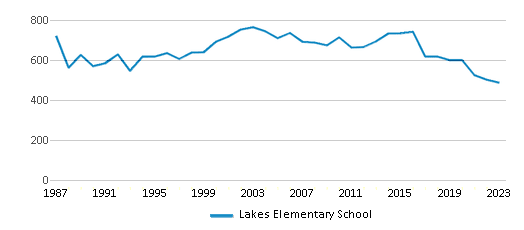
Gender %
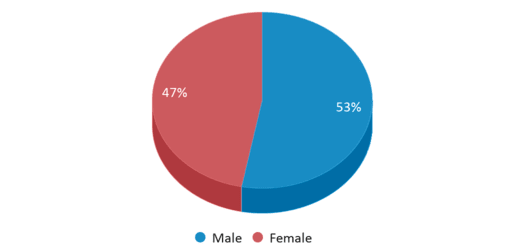
Total Classroom Teachers
30 teachers
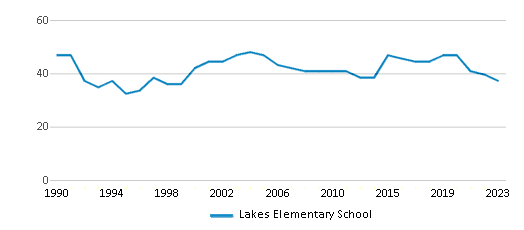
Students by Grade
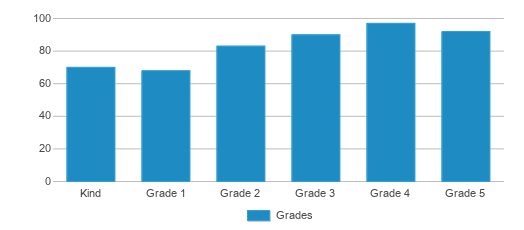
School Rankings
Lakes Elementary School ranks within the top 50% of all 2,113 schools in Washington (based off of combined math and reading proficiency testing data).
The diversity score of Lakes Elementary School is 0.70, which is more than the diversity score at state average of 0.69. The school's diversity has stayed relatively flat over five school years.
Overall Testing Rank
#656 out of 2113 schools
(Top 50%)
(Top 50%)
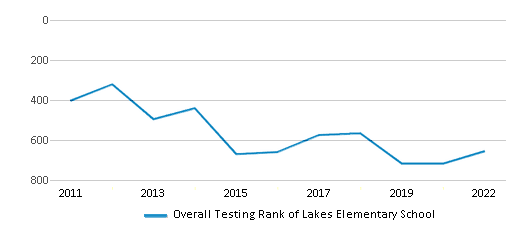
Math Test Scores (% Proficient)
50%
40%
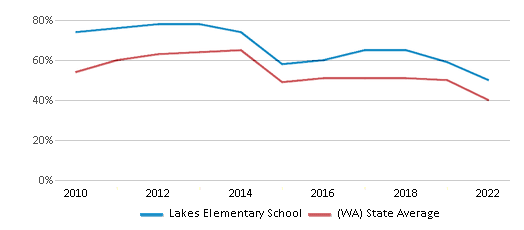
Reading/Language Arts Test Scores (% Proficient)
55%
53%
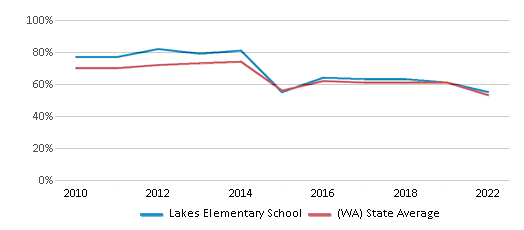
Science Test Scores (% Proficient)
55-59%
49%
Student : Teacher Ratio
17:1
16:1
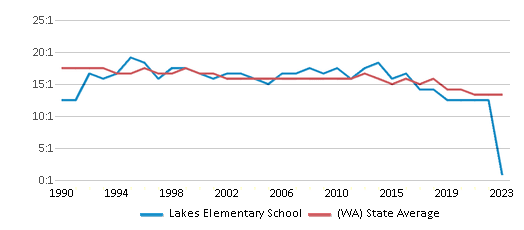
American Indian
1%
1%
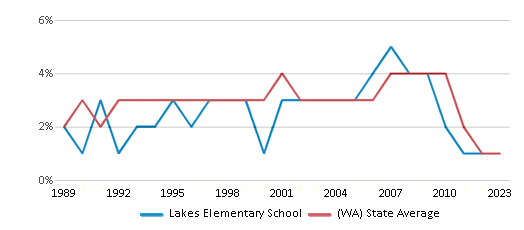
Asian
5%
9%
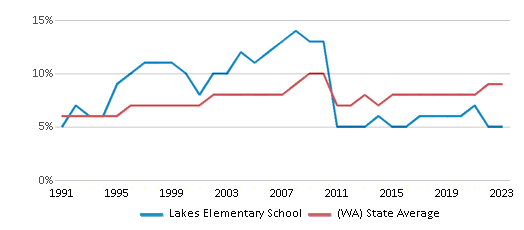
Hispanic
21%
26%
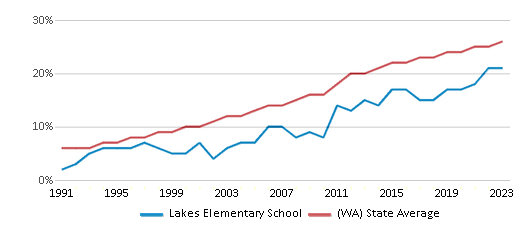
Black
4%
5%
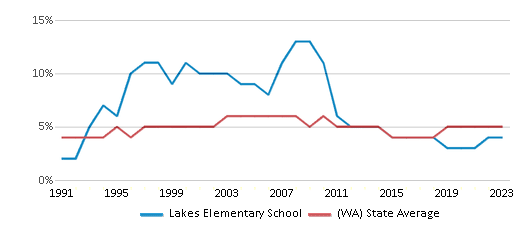
White
48%
48%
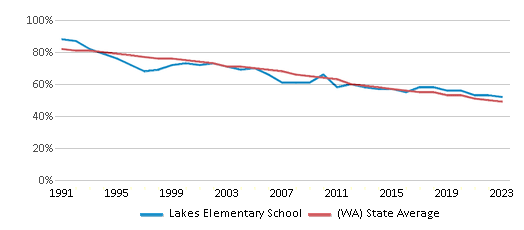
Hawaiian
4%
2%
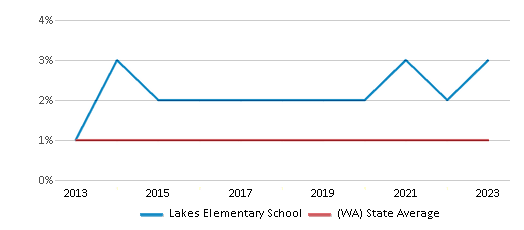
Two or more races
17%
9%
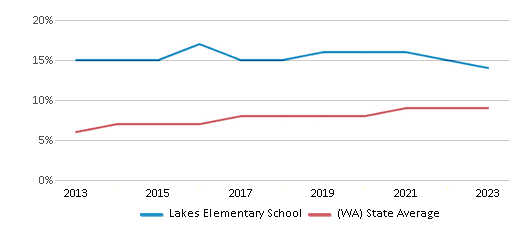
All Ethnic Groups
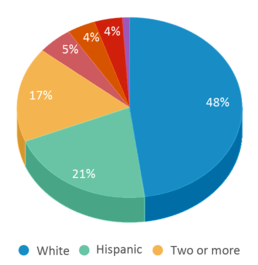
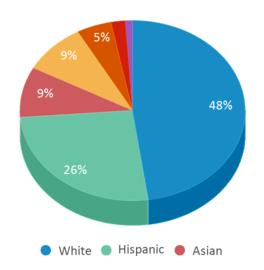

Eligible for Free Lunch
43%
49%
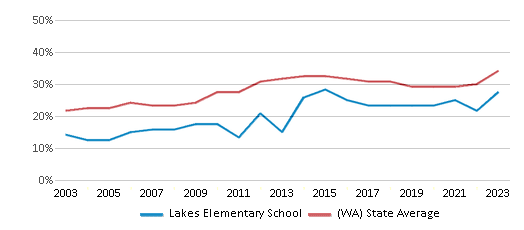
Eligible for Reduced Lunch
10%
8%
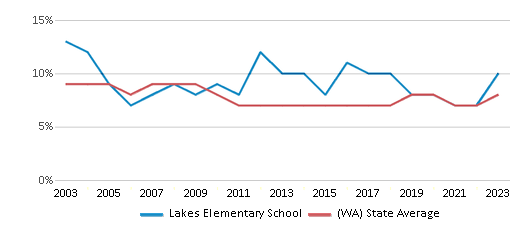
School Statewide Testing
School District Name
Source: National Center for Education Statistics (NCES), WA Dept. of Education
Profile last updated: 02/09/2025
Frequently Asked Questions
What is Lakes Elementary School's ranking?
Lakes Elementary School is ranked #656 out of 2,113 schools, which ranks it among the top 50% of public schools in Washington.
What schools are Lakes Elementary School often compared to?
Lakes Elementary Schoolis often viewed alongside schools like Woodland Elementary School by visitors of our site.
What percent of students have achieved state testing proficiency in math and reading?
50% of students have achieved math proficiency (compared to the 40% WA state average), while 55% of students have achieved reading proficiency (compared to the 53% WA state average).
How many students attend Lakes Elementary School?
500 students attend Lakes Elementary School.
What is the racial composition of the student body?
48% of Lakes Elementary School students are White, 21% of students are Hispanic, 17% of students are Two or more races, 5% of students are Asian, 4% of students are Black, 4% of students are Hawaiian, and 1% of students are American Indian.
What is the student:teacher ratio of Lakes Elementary School?
Lakes Elementary School has a student ration of 17:1, which is higher than the Washington state average of 16:1.
What grades does Lakes Elementary School offer ?
Lakes Elementary School offers enrollment in grades Kindergarten-5
What school district is Lakes Elementary School part of?
Lakes Elementary School is part of North Thurston School District.
School Reviews
4 2/26/2018
I have had students at Lakes Elementary for the last 4 years, prior to that we have been at 2 other elementary schools. Lakes has the smallest class size of any school we attended. (2017 1st grade class is 23 students, 2016 5th grade was 26) The school offers rotating "specialist" classes including art, music, pe, library, stem, and tech for older kids. We have had not had discipline issues, so I can't speak to how that is handled. I did have staff reach out to find extra opportunities to challenge my older student and enhance their education.
2 3/22/2010
Upon enrollment, the one staff member I had contact with was excellent. I actually looked forward to having my son attend this school.
Once enrolled, everything changed. There was little to no academic challenge, and we never saw homework assigned or planners completed. We never once had contact with our sons teacher, other than at quarterly reports.
The facilities were large and unorganized, and very intimidating to someone who is from a smaller, tidy school. There was a lot of clutter in the office and hallways.
Any issues with children are handled very one-sidedly, with meetings had without parent inclusion and discipline handed out without any parental involvement.
Staff are very judgemental (whether deserved or not) and are patronizing and belittling. Bullying is not taken seriously, and students seem to be treated better based on seniority, regardless of their role in provoking issues.
I'm disappointed and would never suggest this school to anyone who had a choice to go elsewhere. I feel that this entire year has been a waste of time, and quite possibly a regression if we can't catch up at another school or through homeschooling over the last few months of the year.
Review Lakes Elementary School. Reviews should be a few sentences in length. Please include any comments on:
- Quality of academic programs, teachers, and facilities
- Availability of music, art, sports and other extracurricular activities
Recent Articles

Sexual Harassment at Age 6: The Tale of a First Grade Suspension
A six-year old in Aurora, Colorado, was suspended after singing an LMFAO song to a little girl in his class and reportedly “shaking his booty.” We look at the case and the sexual harassment problem in public schools today.

How Scaffolding Could Change the Way Your Child Learns
This article explores the concept of instructional scaffolding, a teaching method that enhances learning by breaking down complex tasks into manageable parts. It highlights how scaffolding supports students in developing critical thinking skills and becoming more independent learners. The article discusses the benefits of scaffolding, including improved engagement and reduced anxiety, and provides strategies for its implementation across various educational levels.

February 05, 2025
Understanding the U.S. Department of Education: Structure, Impact, and EvolutionWe explore how the Department of Education shapes American education, from its cabinet-level leadership to its impact on millions of students, written for general audiences seeking clarity on this vital institution.





